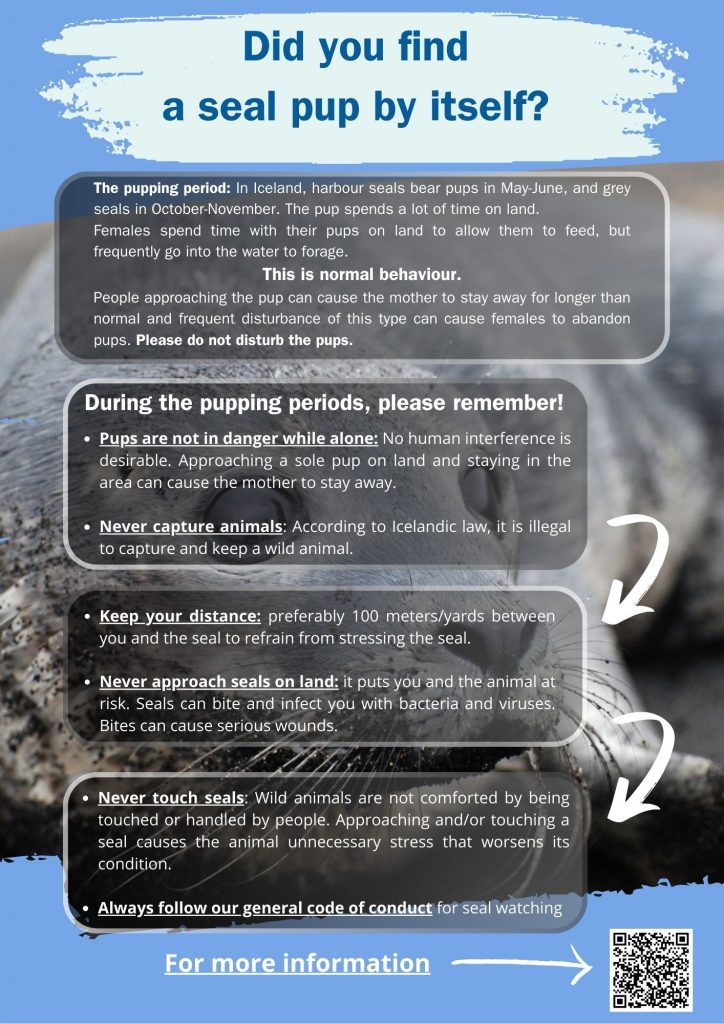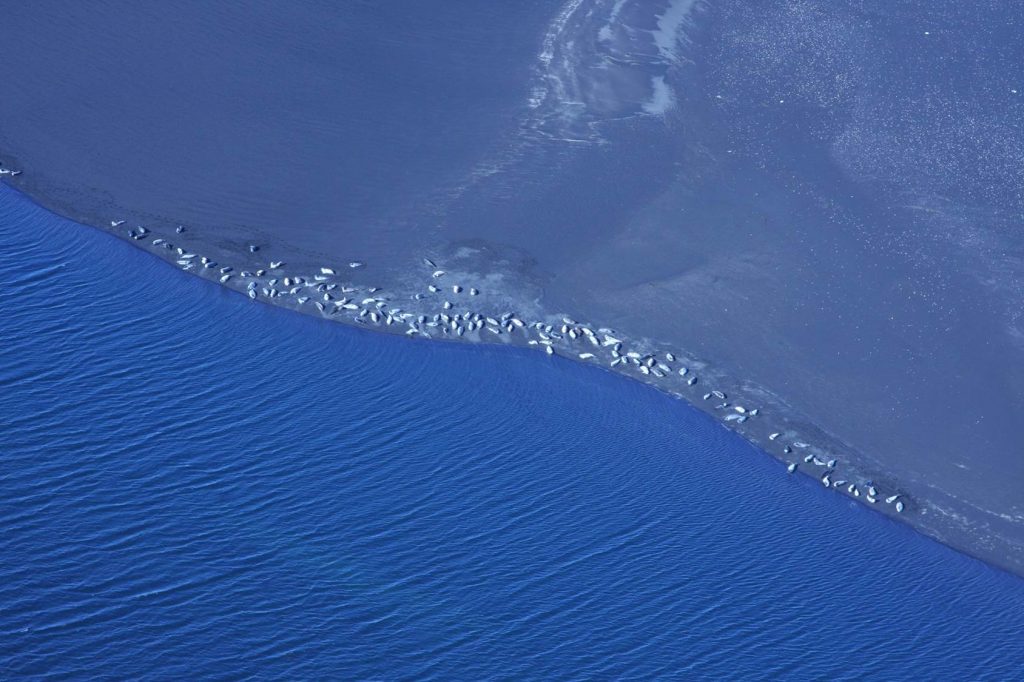




Please welcome Colin, who is currently doing an internship at the Icelandic Seal Center in collaboration with the Marine and Freshwater Research Institute and is supervised by Dr. Sandra Granquist. Colin is a third-year undergraduate student in environmental science and terrestrial resource management at the University of Washington, Seattle. He is interested in climate modeling and researching the impact of climate change on marine ecosystems. Throughout his internship at the Icelandic Seal Center, Colin will analyze the potential changes in habour seal haul-out patterns and site conditions under climate change projections (CMIP6 projections), as well as regularly assist in fieldwork and seal surveys. His aim of the research study is to guide conservation actions to ensure sustainable management of harbour seal populations in Iceland amid the ever-changing climate.

Nýverið birtist vísindagrein um breytingar í stofnstærð landsela á 40 ára tímabili sem ber heitið “The Icelandic harbour seal (Phoca vitulina) population: trends over 40 years (1980–2020) and current threats to the population”. Höfundur er Sandra Granquist, deildarstjóri Selarannsóknardeildar hjá Selasetrinu og sérfræðingur hjá Hafró. Hér fyrir neðan má sjá samantekt á ensku (abstract) um greinina, ásamt hlekk til að lesa greinina í heildsinni.
Abstract:
Regular harbour seal (Phoca vitulina) population censuses are necessary to monitor fluctuations in the population size and to inform seal management. In this paper, the status of the Icelandic harbour seal population is presented, along with trends in the population over a 40-year period. In total, 13 full aerial censuses were carried out during the moulting season (July-August) between 1980 and 2020. The most recent census from 2020 yielded an estimate of 10,319 (CI 95%= 6,733-13,906) animals, indicating that the population is 69.04% smaller than when systematic monitoring of the population commenced in 1980 (33,327 seals). The observed decrease puts the population on the national red list for threatened populations. Trend analyses indicate that most of the decline occurred during the first decade, when the population decreased about 50% concurrently with large human-induced removals of harbour seals. After that point, the population decline slowed down but continued, and currently the population seems to fluctuate around a stable minimum level. The sensitive conservation status of the population underlines the need to assess and sustainably manage current threats to the population, including human-induced removals, anthropogenic disturbance, and various environmental factors such as contaminants, climate change and fluctuation in prey availability. Furthermore, it is urgent to continue regular censuses and to increase monitoring of population demographic factors.
Grein með titil Gender difference in biospheric values and opinions on nature management actions: The case of seal watching in Iceland var birt í ritrýnd tímaritið Ocean & Coastal Management. Greinin er aðgengileg hér. Höfundarnir eru Cécile M. Chauvat, sem vinnur hjá Selaseturið Íslands og Náttúrustofa Norðvesturlands, Dr. Sandra M. Granquist frá Hafrannsóknastofnun og deildarstjóri selarannsóknasviðs hjá Selasetur Íslands, og Dr. Jessica Aquino, Assistant Professor, ferðamáladeild hjá Háskólanum á Hólum.
Abstract
Gender differences in biospheric value orientation and opinions on wildlife management have the potential to be used as a management tool in wildlife watching settings. This research note builds on a dataset from Chauvat et al. (2021) to investigate gender differences in biospheric value orientation and opinions on seal watching management of visitors at seal watching sites post hoc. Questionnaires (n = 597) were collected at three sites in Northwest Iceland. It was found that when genders were compared, women had stronger biospheric value orientations, were more aware of potential anthropogenic impacts on seals, believed to a higher extent that regulations were useful in terms of decreasing impact, and were more positive towards most management actions suggested in the questionnaire. It is argued that further understanding of the gender dynamics regarding pro-environmental attitudes may be a valuable element in the context of sustainable wildlife tourism management.

Nýlega birtist grein um uppruna og skyldleika mismunandi stofna landsels út frá erfðafræðilegum rannsóknum í vísindaritinu Molecular Ecology. Greinin ber heitið „Origin and expansion of the world’s most widespread pinniped: Range-wide population genomics of the harbour seal (Phoca vitulina)“. Sandra M. Granquist sérfræðingur á uppsjávarsviði Hafrannsóknastofununar er einn af höfundum greinarinnar.
Landselur er ein útbreiddasta selategund heims og finnst í mörgum fjölbreyttum búsvæðum á norðurhveli jarðar. Á sama tíma er tegundin talin vera mjög staðbundin sem vekur upp spurningar um hvernig dreifingu tegundarinnar hafi átt sér stað og mismunandi stofnar myndast. Í rannsókninni voru erfðasýni greind úr 286 landselum frá alls 22 mismunandi svæðum, þar á meðal við Ísland, og þau borin saman. Niðurstöður benda til þess að uppruna tegundarinnar sé að finna í norðaustur Kyrrahafi og þaðan hafi hún farið í Norður-Atlantshaf meðfram nyrsta hluta Ameríku yfir til Evrópu. Mikill erfðafræðilegur munur er í dag á milli landsels í N-Kyrrahafinu og N-Atlantshafinu. Þá bendir erfðafræðilegur munur á fínum landfræðilegum skala til sterkra átthaga tengsla hjá tegundinni. Þannig er til dæmis íslenski landselastofninn erfðafræðilega frábrugðinn öðrum landselastofnum.
Hér er hægt að lesa greinina: